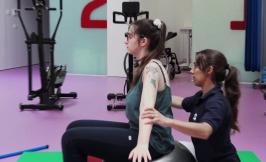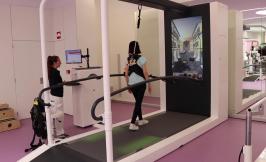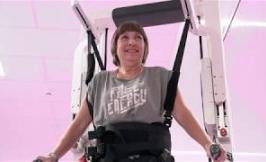Spinal cord injury
A spinal cord injury occurs when the nervous connection between the brain and the rest of the body is interrupted or altered as the result of trauma or an accident, a disease (tumour, infection, vascular, etc.) or as a result of a congenital cause (spina bifida). Spinal cord injuries can be classified depending on the extent to which the patient is affected.
- Complete spinal cord injury
- Incomplete spinal cord injury
Spinal cord injury has different consequences depending on the level of the spine in which it occurs:
- A cervical injury can cause TETRAPLEGIA, which is the loss or decrease in sensation and/or voluntary mobility of the upper and lower extremities and of the entire trunk.
- A thoracic and lumbar injury results in PARAPLEGIA, which is manifested by a lack of sensation and/or total or partial paralysis of the lower extremities, and of part of the sublesional trunk.
- An injury to the medullary cone and cauda equina causes impaired sensation and reduced voluntary mobility, although the ability to walk is usually preserved. The most notable sequelae are the loss of control over sphincters and impaired sexual function.
Other consequences derive from these injuries, which appear depending on the degree and level of injury, such as:
- Lack of sphincter control
- Neuropathic pain
- Spasticity
- Sexual problems
- Skin problems, such as pressure ulcers
- Impaired respiratory function
- Osteoporosis
- Disorders of body temperature regulation

This personalised training and improved functionality programme is aimed at optimising and maintaining functional capabilities, as well as preventing complications associated with disability issues.

This programme of treatment of neuropathic pain through transcranial stimulation and virtual reality is designed for patients who have suffered a neurological injury and present neuropathic pain after their rehabilitation process is finished, or people in a chronic phase who want to relieve their pain

Guttmann Barcelona offers a treatment programme of physiotherapy and gait rehabilitation in a group, with sessions based on shared rehabilitation goals, with activities being planned around these goals in both the rehabilitation room and the swimming pool.
Et pot interessar
 Friday, 29 September, 2023
Research and spinal cord injury
Friday, 29 September, 2023
Research and spinal cord injury
Spinal cord injury is one of the most serious causes of neurological disability. Historically, it had a very poor prognosis and almost 90%...
 Tuesday, 08 September, 2020
Mindfulness: benefits and practice
Tuesday, 08 September, 2020
Mindfulness: benefits and practice
BENEFITS OF THE PRACTICE OF MINDFULNESS We will improve our ability to cope with difficulties and conflict situations. We will acquire more...
 Monday, 30 March, 2020
Robótica para la rehabilitación
Monday, 30 March, 2020
Robótica para la rehabilitación
El uso de la tecnología en el marco de un programa de rehabilitación integral ofrece la oportunidad de aumentar la intensidad y la...




